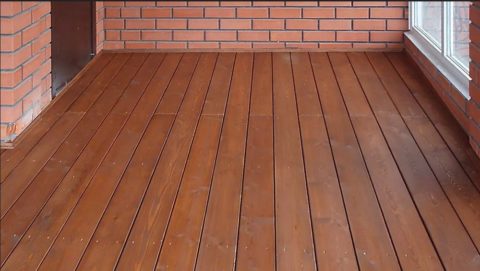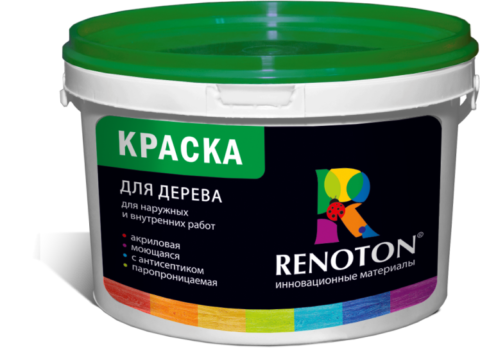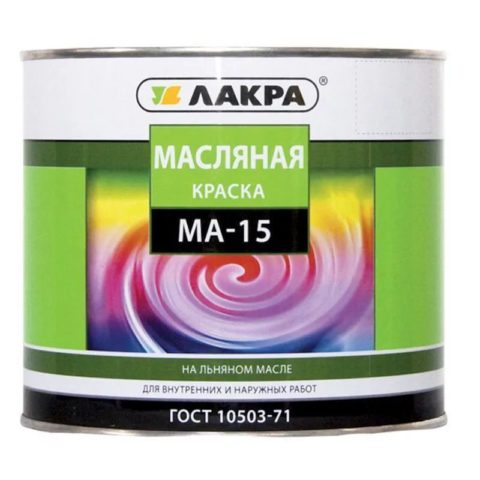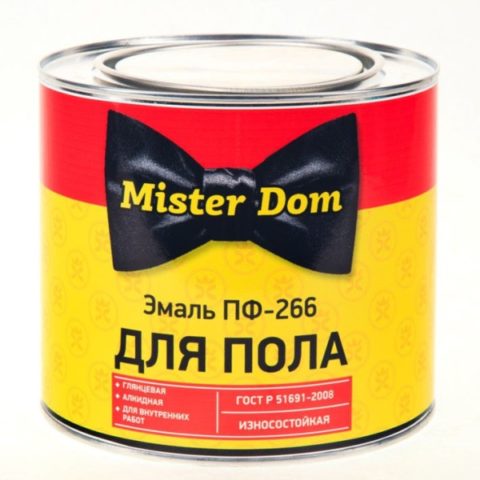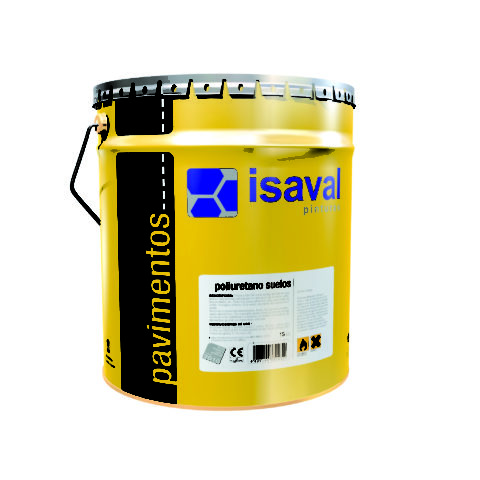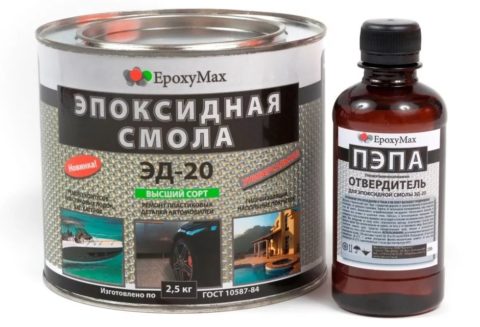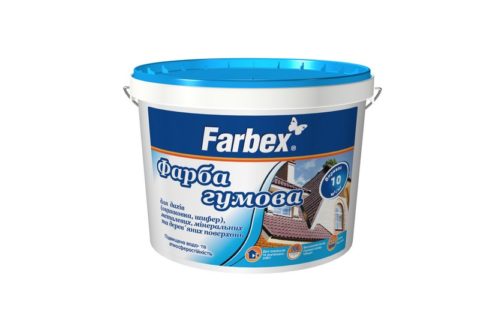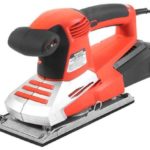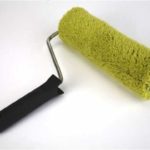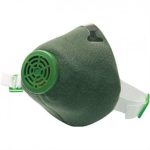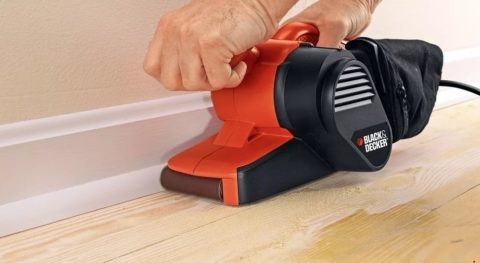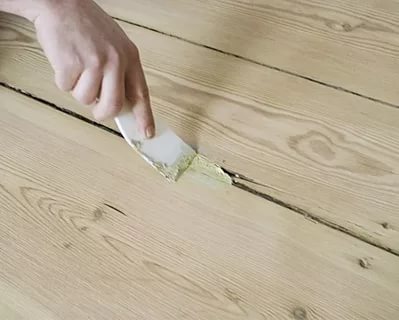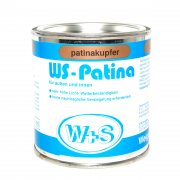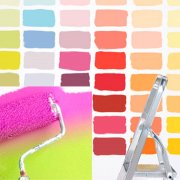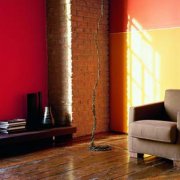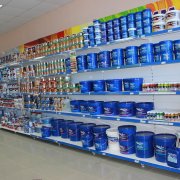Paint for wood floors: its varieties, tips for use
Wood has been the most popular building material for many years. Since it has a number of positive qualities, it is actively used in the construction of various types of buildings and finishing work. Wood structures are subject to mandatory protection against moisture, fire, pests and bacteria.
This applies equally to floor coverings. Let's consider what paint for a wooden floor can be.
The content of the article
Types of paint for wooden flooring
Paints for wooden floors perform different functions:
- Protective function. Wooden floors during operation are exposed to the greatest impact, including external factors and abrasives. To protect them, use various paints, varnishes and impregnations. If you choose the right composition depending on the conditions of use and the material from which the floor is made, then you can significantly improve the characteristics of the wooden structure and significantly increase its service life.
- Decorative function. In addition to the protective properties of coatings, do not forget about the decorative component. In the interior, it is the floor that plays a significant role, it is the hallmark of any room. A correctly selected composition will help to emphasize the structure of the wood, giving the flooring an attractive look, or change the color of the wood, fitting it into the general style of the interior.
Paints and varnishes are used both for drawing on a freshly laid flooring, and for restoration of an old floor that has lost its operational qualities.
Wood flooring has found its application both for the interior decoration of the room and on the street - for example, in gazebos and on terraces.
When choosing paint for wood floors, you should consider:
- Grade of wood. Due to the varying degrees of water absorption of different wood species, the paint consumption will be different.
- Wood floor operating conditions. The purpose of the room and the climatic factors in which it is used are important here.
- Have any formulations been previously applied to the floor?. This is required in order to choose a coating compatible with the previous one.
- Is wood pretreatment necessary for paint application?
- Transparency / Opacity. All paints and varnishes used for application to wooden structures are divided into transparent and opaque compositions. The first (oils, varnishes and impregnations) perfectly emphasize the texture of the tree, the second ̶ paints it in the required color.
Consider what types of protective and decorative compounds are used for wood processing. Floor paints and impregnations are produced using various technologies, using diverse components.
Acrylic paint
For many years, acrylic paint for a wooden floor is the most popular coating (seeAcrylic paints and how to use them: tips, specifications and recommendations) It is made from acrylic resin, water and dyes. It is used for interior woodwork and for painting facades. Consider its properties, positive qualities and disadvantages when used for painting wood floors.
Pros:
- resistance to ultraviolet radiation;
- water resistance;
- high wear resistance;
- ease of application;
- resistance to temperature differences;
- short time required for drying;
- lack of an unpleasant smell;
- variety of colors and shades.
Minuses:
- cheap paint is applied to a wooden floor in at least 3 layers;
- not stored at low temperatures (there are types of acrylic paints that can retain properties even at subzero temperatures, however they are expensive).
Oil paint
This type of paint is made on the basis of natural drying oil, the basis for which are vegetable oils. This type of paintwork was popular for painting wooden floors until better and more durable products appeared (see.Oil paints: their types and application rules).
Pros:
- resistance to temperature differences;
- cost-effectiveness of spending;
- resistance to mechanical damage, which is especially true for wood floors;
- low price;
- uniformity and rich color of the coating.
Minuses:
- dries for a long time;
- has a pungent odor;
- not too durable composition, eventually becomes cracked and peels.
Alkyd enamel
The paint is based on alkyd drying oil. Available in matte and glossy enamel (seeAlkyd paint: material characteristics) Alkyd enamel is easy to apply on a wooden floor; it is a popular coating due to its low price.
Pros:
- moisture resistance;
- resistance to temperature extremes;
- good protective properties;
- short drying time.
Minuses:
- it is combustible;
- before drying, the enamel has a pungent odor;
- low vapor permeability;
- no resistance to aggressive environments.
The service life of alkyd floor paint increases markedly when alkyd varnish is used after staining wood. Most often, such enamels are used in rooms with high humidity.
Polyurethane paint
Available in the form of a one-component and two-component composition (seePolyurethane paint - types and distinctive properties) To apply polyurethane paint on a wooden floor, a one-component version is usually used.
Pros:
- This coating penetrates deep into the structure of the tree and protects it well.
- Not afraid of water and aggressive environments.
- It has good resistance to temperature extremes and mechanical damage. Polyurethane can be applied at low temperatures.
- The paint has excellent hygienic properties.
- After applying to the wood floor, the treated surface gains shine.
- Does not need preliminary primer application.
Minuses:
- toxicity;
- high price.
Epoxy paint
Despite the fact that its main purpose is to protect metal and concrete, two-component epoxy paint is also used for painting wooden surfaces (including floors) during outdoor and indoor use.
Pros:
- It protects wood from pests and bacteria.
- It has good strength, wear-resistant to mechanical damage to the wooden floor.
- Not afraid of moisture, sunlight.
- It is easy to apply with your own hands.
Epoxy-based paint consists of two components (this can be seen in the photo, mixing them as described in the instructions). The binder component consists of a mixture of epoxy resins. Hardener is intended for hardening of paint. They are mixed in the required amount immediately before painting. The remaining compounds can be stored for a long time.
Surface preparation before using this paint consists of sanding a wooden floor and applying an epoxy primer. Soil improves adhesion and uniform distribution of the composition over the surface. The composition is usually applied in two layers. The second layer should be applied after the first has completely dried, that is, no earlier than 12 hours. Work is best done using a roller.
Minuses:
- the need for work on mixing the components.
- the choice of shades of epoxy paint is not wide enough.
- After painting the floor, the room should be ventilated.
Rubber paint
The polymers that make up this paint provide good water resistance and abrasion resistance on a wooden surface. It is necessary to apply a coating in 2 layers. If you touch the floor with your hands after applying the paint, you get the impression that you are touching a soft rubber coating. A film is formed on the dried composition, which protects the surface from environmental influences.
Pros:
- strength;
- elasticity;
- water resistance;
- resistance to mechanical stress and cracking;
- low price.
Rubber coating is a rather interesting version of floor paint on wood.
TO cons include low vapor permeability of the coating, although some manufacturers have improved this characteristic.
There are also perchlorovinyl coatings for painting wooden surfaces. However, they are not very popular, as they are toxic, do not withstand exposure to sunlight and are fire hazard.
Table comparing the characteristics of paints for wood floors
For a better perception, we summarize the indicators of various colors in a table. A comparison of the characteristics will help determine what paint is needed for the wooden floor in your case:
| Paints for wooden floors | Life time | Smell | Moisture resistance | UV resistance | Wear resistance | Drying time | Resistance to temperature changes |
| Acrylic | 8-10 years | – | + | + | + | From 3 days (one layer) | + |
| Oil | 3-4 years | + | + | – | + | Up to 2 days | + |
| Alkyd | 2-6 years | + | + | + | + | 8-10 hours | + |
| Polyurethane | 10-30 years | – | + | + | + | 4-8 hours per layer. Full mechanical load - after 3 days | + |
| Epoxy | Up to 15 years | + | + | + | + | 12-24 hours | + |
| Rubber | 10 years | – | + | + | + | 2 hours | + |
It should be noted that various manufacturers add special ingredients to the paint composition that improve the properties of coatings.
Important! You should not chase too cheap composition for coloring - it is quite possible that he will not be able to provide protection and durability of a floor from a tree for a long time.
Wood floor painting
For the application of paint you will need:
- Sanding machine
- Roller
- Brush
- Tray
- Respirator
- Putty knife
Stages of work on painting a wooden floor:
- The surface is being cleaned: removal of old skirting boards (if a wooden skirting board is installed for the floor high for painting, walls along its perimeter must be glued with masking tape to prevent paint from getting on the walls), debris removal.
- Using a grinder, bumps and old coatings are removed.
- If cracks have opened in the wooden coating, they should be repaired with wood putty.
- The surface is again cleaned, the resulting garbage is removed.
- The floor is treated with soil compatible with future paintwork.
- After the wooden surface has dried, you can start applying the paint. The composition in the jar is thoroughly mixed, poured into the tray.
- A paint-soaked roller is used to paint the floor surface starting from the corner farthest from the door.
- With a brush, the places where the roller cannot be reached and the baseboard can be painted over.
Important! Due to the porous structure of the tree, it is recommended to apply paint in 2 layers.
- After drying of the first layer, the second is applied.
- If it is intended to apply the topcoat, it is applied to the dry floor.
There is nothing complicated in painting a wooden floor, the main thing is to remove all existing defects of the base, and use compatible compounds.
We suggest watching the video in this article on this topic.
In order to paint the laid wooden floor or update the old, well-worn, there is a wide range of paint coatings. Everyone chooses a suitable one, whether it is a quick-drying, odorless floor paint, but expensive, or durable, but leaving an unpleasant aroma for some time after application and standing budget.Value for money has not been canceled.
